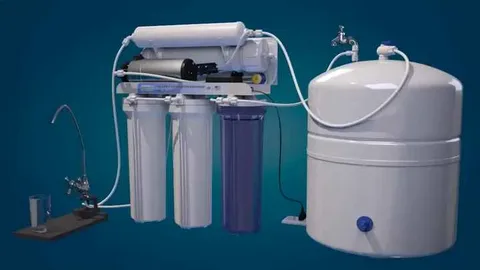The Burtons Aquatics Drum Filter runs as an innovative high-performance filtration system that maintains clean, healthy pond water. The filtration system stands out due to its automated cleaning capabilities as well as self-cleaning capabilities, which make it one of the best automatic filtration options available. Beginning from being a veteran pond owner to new members of the filtration community, both need to understand the proper setup and optimization of the Burtons Aquatics Drum Filter for maintaining balanced, clear pond environments. These steps will help you achieve the best performance.
Step 1: Choosing the Right Location
The initial process of preparing your Burtons Aquatics Drum Filter requires selecting the most suitable spot for installation. The proper position for such a filter rests below the water level in a gravity-fed system. To permit natural pond water flow you should position the filter unit at a lower position than the pond water level. The installation of your pond filter requires using a pump that matches the flow rate requirements.
Step 2: Installing the Drum Filter
- Connect the Inlet and Outlet Pipes:
The first step involves installing the pond inlet pipe into the filter intake port. Rigid piping combined with high-quality pond hoses should be used for leak prevention. The pipe connected to the outlet will transfer filtered water to the pond.
- Position the Filter’s Overflow Pipe:
The installed overflow pipe prevents flooding through drainage of surplus water. Position the overflow pipe as per the manufacturer’s instructions for proper placement.
- Attach the Drainage System:
The drainpipe needs to be connected to the waste outlet where automatic removal of debris occurs. The automatic self-cleaning capability operates as a crucial feature for unattended filtration operation.
Step 3: Calibrate the System for Optimal Performance
Before operation, you need to set the water flow rate according to your pond size while respecting the parameters outlined in the Burtons Aquatics Drum Filter manual. The design parameters for system success cover a flow rate range from 5,000 to 30,000 liters per hour for different models of Burtons Aquatics Drum Filters. Check that your selected pump can maintain a reliable and proper flow speed.
Step 4: Optimizing the Filter Media
The Burtons Aquatics Drum Filter system functions by using different filtration media that capture small debris in the filtration process. To optimize your system:
- Regularly Clean the Drum and Screen:
Interfering objects on the drum screen should be checked regularly to prevent performance reduction of the self-cleaning drum filter.
- Monitor the Waste Chamber:
Regular checks of the waste chamber need to verify that all debris is properly removed during cleaning runs.
- Check the Pump and Flow Rate Regularly:
You must check that the pump operates at peak efficiency as time passes. Any decrease in flow rate signals a clog in pipes or filter screens, thus requiring immediate investigation.
Step 5: Maintain Regular Maintenance Routines
The Burtons Aquatics Drum Filter requires continual standard upkeep procedures to operate at its best capacity. System cleaning will be needed at required intervals and you should perform regular pump checks to replace deteriorated system components when required. Constant water quality monitoring helps assess if the filter works at its most efficient level.
Conclusion
The correct installation and proper optimization of a Burtons Aquatics Drum Filter brings you a healthy and clear pond with reduced filtration work. Using proper installation combined with regular calibration and ongoing maintenance practices allows you to reach your optimum water filtration results. The appropriate setup of your ecosystem will provide optimum maintenance that enables both fish survival and aquatic plant growth, together with other aquatic organisms.


